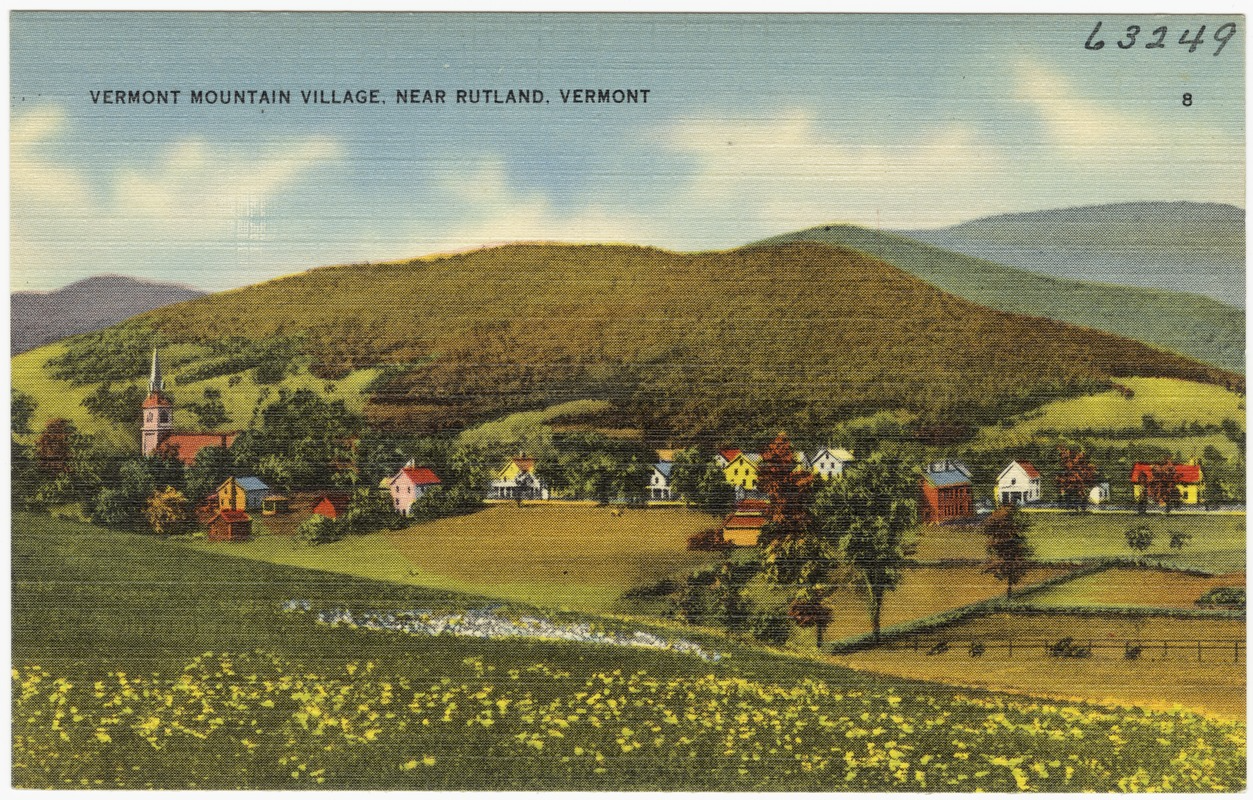Vermont View Establishments by Vermont Cities

Vermont: Free but not Equal
Vermont’s African American population, although historically relatively small, has a long history in the Green Mountain State. From 1777 to 1791, the constitution of the independent republic of Vermont explicitly prohibited slavery for adults reaching a certain age; that prohibition became part of the VT Constitution when it joined the union in 1791 as the 14th state. Between those years, according to the census records, the number of African Americans grew from an estimated 25 individuals to about 270, or 0.5 percent of the population.
The tradition of referring to slaves as servants makes it difficult to analyze the early census records in Vermont accurately. African Americans established and maintained a thriving farming community in Hinesburg from 1795 to 1865. Other towns with sizable Black populations included Bennington, Woodstock, Windsor, and Ferrisburgh, along with cities like St. Albans and Rutland.
Dinah, Lucy Terry Prince, and Abijah Prince were formerly enslaved people who advocated for financial and land rights in Vermont’s courts. Dinah’s enslavement by VT Supreme Court Justice Stephen Jacobs was disavowed by his fellow justices when they reaffirmed the provision prohibiting adult slavery in the VT Constitution in 1802. Lucy Terry Prince was the first known African American poet in the United States; she wrote a ballad recording the 1746 attack on Deerfield settlers. In 1810, the memoirs of Jeffrey Brace were published to recount his enslavement and service in the Revolutionary War.
In the 1830s, Vermont’s residents were actively involved in the fight for the immediate emancipation of slaves across the nation. The first statewide antislavery society was established in 1834. With a few years, 10,000 of Vermont’s 290,000 residents had become members of a local or state antislavery society. Some of the most influential national antislavery advocates were born or lived in Vermont, including Thaddeus Stevens, William Upham, William Slade, and Jonathan Peckham Miller.
In the early part of the nineteenth century, educational institutions in Vermont opened their doors to African Americans, with Alexander Twilight becoming the first African American person to receive a degree from any U.S. college or university in 1823. Twilight became the first African American to serve in any state legislature when he was elected in 1836 to the VT General Assembly. In 1838, Andrew Harris became the first African American graduate of the University of VT.
Many enslaved people risked travel to Vermont on the Underground Railroad, whose safe houses reached northward to freedom in Canada. Rokeby, the 1793 farm of Quaker Thomas Robinson in Ferrisburgh, is the best documented Underground Railroad safe house in Vermont. Under the care of the abolitionist Robinson family, fugitives like Simon and Jesse escaped slavery in the 1830s to find shelter there.
Between 1870 and 1920, Vermont’s African American population grew steadily as newly freed people from the South began migrating north and foreign-born immigrants chose to settle in Vermont. By the 1910s and 1920s, African Americans represented 0.5 percent of the state's population, remarkably the highest in history until that time, according to historian Elise A. Guyette. Yet, there was limited equality between white and African American residents throughout New England. Discrimination remained an issue, prompting some proprietors to list their properties in guidebooks such as Hackley and Harrison’s Hotel Guide (1930-1931) and the Negro Motorist’s Green Book (1937-1967) to help identify safe lodging, food, and other amenities.
Green Book listings in the state of Vermont were relatively few. There were nine sites in all: four in Burlington, two in Manchester, three in Rutland, and one in Northfield. Most of these were hotels, tourist homes, and other places for travelers to stay the night. There was a single service station, one restaurant, and an inn that offered food, lodging, and event space. Nearly all of Vermont’s Green Book sites were situated along Route 7, which is the primary route running north-south along the western side of the state. This highway passes through or near Vermont’s most populous towns, making it a convenient travel route that extends to the U.S. Canadian border. The only exception was Cole’s Brown Bungalow, which was located in central Vermont just a short drive south of the state capital of Montpelier. Seven of Vermont’s Green Book sites exist today. Two have been demolished to make way for a parking lot and the expansion of a railroad yard; one has yet to be located.
Laura V. Trieschmann
Elise A. Guyette
Brooklyn Howe
Vermont Bibliography:
Guyette, Elise A., and Vermont Historical Society. Discovering Black Vermont: African American Farmers in Hinesburgh, 1790-1890. Barre, Vermont: Vermont Historical Society, 2021.
Mortensen, Rebekah and Elise A. Guyette, “The Pates and Kings of Mortensen Street,” The Chittenden County Historical Society Bulletin, Vol. 49 No. 3 (Summer 2020) https://vermonthistory.org/documents/digital/CCHSSummer2020.pdf
Whitfield, Harvey Amani. The Problem of Slavery in Early Vermont, 1777-1810, Vermont Historical Society, January 2014.



